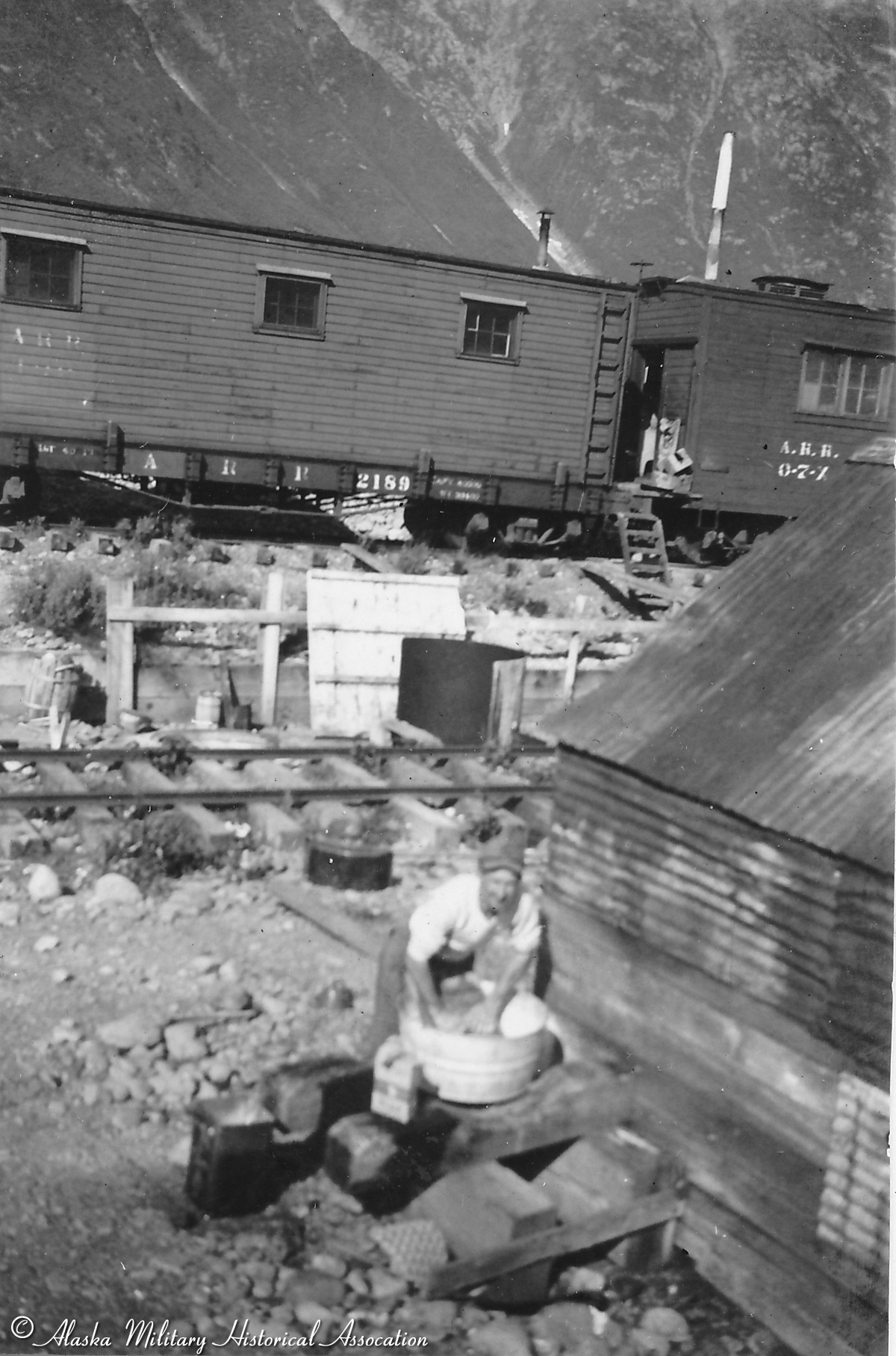Patrick Durand says of the photo, "Everything says Seward during WWII. Mt. Marathon in background. Very light rail and the wanigan bunk houses built on flats with odd numbers not matching the flat number. GI hat on Laundry worker. Show the kids why it was called a wash tub." From Don Marenzi, "Flatcar 2189 was an ex ICC "Panama" flatcar with a portable camp body. The camp body was built by the Alaska Railroad in Anchorage; there were a few different configurations of these and they could be used on flatcars or as structures on the ground. As Pat mentioned they had their own number series different from whatever car they were on. Most (probably all ?) had an overhang with a door at one end of the car some had a door on the side; the window pattern varied with use. A few eventually were renumbered (after WW2) into the X-### work car series with the body and flatcar carrying one number. These all got retired by the early 1950's when the former troop cars and other equipment arrived. A number of the bodies were sold to individuals as structures; the last one I am aware of was near Moose Pass in the late 1960's according to John Henderson. "Car 0-7-X is a MoW kitchen & dining car (note the large end door, ventilator "cupola" and tall stack). It was renumbered X-250 (after WW2) and condemned in 1947. It was built in the Anchorage shops on the frame of a flatcar. In the photo the truck appears to be an older style of arch bar truck than 2189 has. "Not much ballast on the track in the foreground; was those tracks laid during WW2 to hold the camp cars? "And in the foreground it looks like laundry day!!! Smile for the camera!" |
